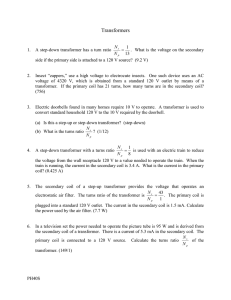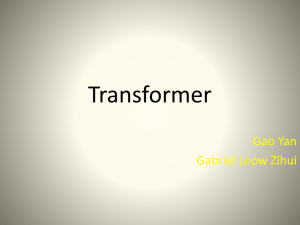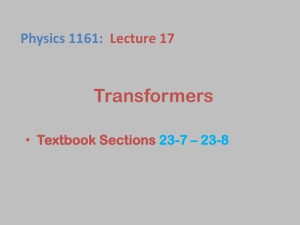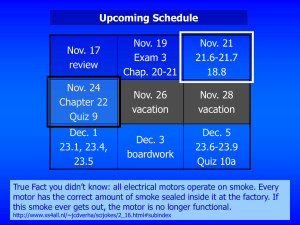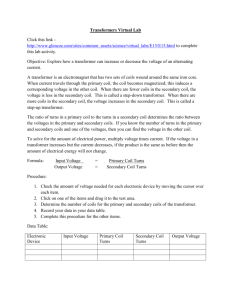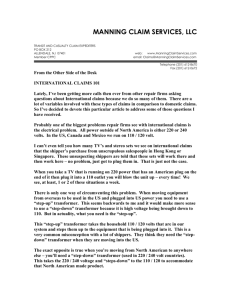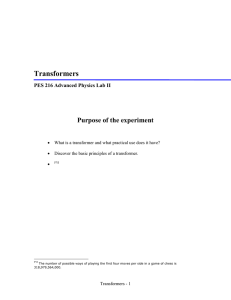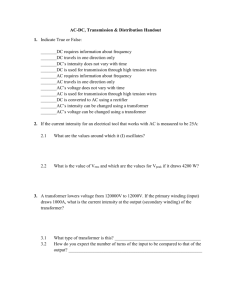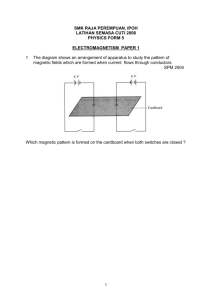Unit 5 Day 4 – Transformers
advertisement
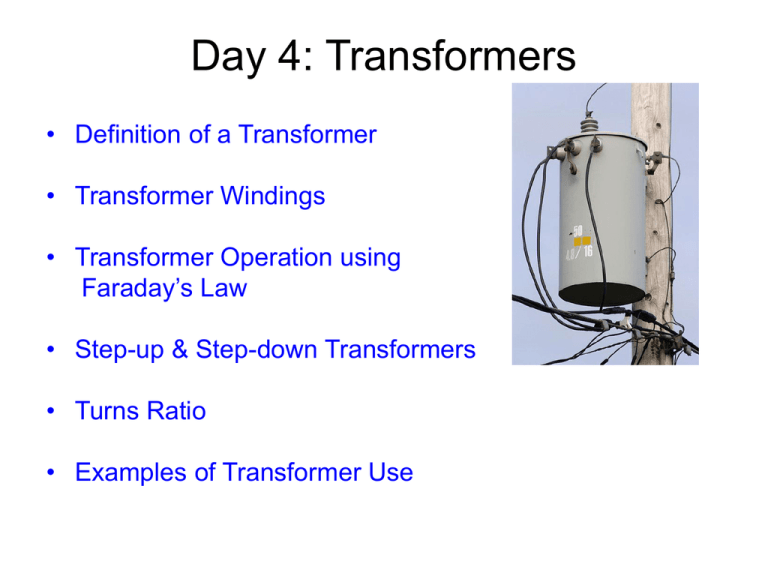
Day 4: Transformers • Definition of a Transformer • Transformer Windings • Transformer Operation using Faraday’s Law • Step-up & Step-down Transformers • Turns Ratio • Examples of Transformer Use Definition of a Transformer • A transformer is a device for increasing or decreasing AC voltage • A transformer consists of two independent coils wrapped around a common ferrite core. • The input winding is called the primary winding, and the output winding is called the secondary winding Transformer Operation • A transformer is designed so that a change in magnetic flux in the primary coil, passes through the secondary coil. Energy losses through the core are minimal • An AC voltage applied to the primary coil, produces a ΔΦB and induces an AC voltage of the same frequency in the secondary coil • The voltage in the secondary coil is dependent upon the ratio of the turns in the coils in the transformer d B Faraday' Law VP N P dt d B VS N S dt VS NS NS or VS VP VP N P NP Step-up & Step-down Transformers • If the secondary coil has more turns (loops) than the primary, it is called a step-up transformer • If the secondary coil has less turns (loops) than the primary, it is called a step-down transformer • Energy conservation requires that (neglecting core losses) that the primary power equals the secondary power. VP I P VS I S or IS NP IP NS Transformer Operation • Transformers only work with AC current. A DC current in the primary coil does not produce a changing magnetic flux, therefore it does not induce an EMF in the secondary coil. • A voltage step applied to the primary coil, will only induce a voltage spike in the secondary coil. Examples of Transformer Use • Cell phone chargers • Car ignition coil • Power company HV Transformers Examples of Transformer Use

